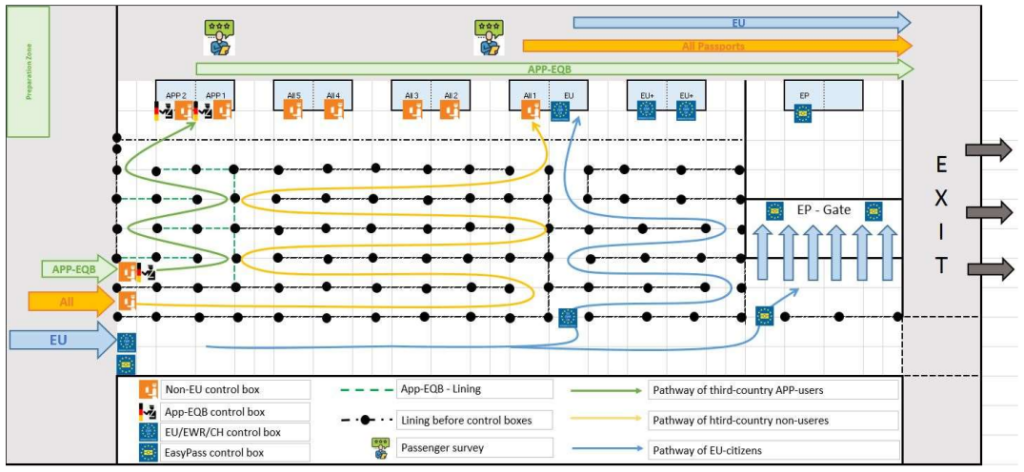From next year, EU authorities expect long queues at the external borders. The reason is a new “Entry/Exit System” that requires biometric data from all travellers. An app is to provide a remedy.
Next year, the European Union plans to introduce its new “Entry/Exit System” (EES). All travellers from third countries entering the Schengen area will have to provide four fingerprints and a facial image. This serves to determine whether third-country nationals are overstaying their visas and not leaving after three months as required. The biometric data can also be used by police authorities for tracing purposes or for preventing threats.
However, the interior ministries of the EU member states fear that the introduction of the EES will lead to long queues at airports and a considerable increase in work for border authorities. For this reason, France even wants to postpone the Europe-wide introduction of the EES until after the Olympic Games next summer. A decision on this is still pending.
In order to shorten the resulting waiting times, the EU states are now relying on an app with which travellers can transmit data about themselves in advance. The application was developed by the German Federal Police in cooperation with the EU border agency Frontex. It is aimed at travellers with short-term visas or from countries with which the EU has concluded a visa waiver agreement. People who have a long-stay visa or a residence permit as a family member are excluded from its use.
Since January, the app has been tested as a pilot project at Munich Airport, but initially only by Lufthansa and Turkish Airlines on the routes to Tbilisi and Istanbul. For this purpose, the two airlines founded a “Munich Smart Borders Focus Group” together with Frontex and the Federal Police. The first results were presented by Frontex and the Federal Police at a conference in Munich at the end of April.
Via a freedom of information request, “nd” received the corresponding presentations. According to this, the app is to digitally supplement the obligatory oral entry questionnaire. In the process, travellers are to answer questions that can also be asked by border officials. These questions concern the planned length of stay in the Schengen area, the reason for the journey and the planned destinations. In addition, information on the amount of cash carried, the availability of a credit card and the existence of travel health insurance is to be provided.

After all questions have been answered, the app generates a QR code that travellers can present at the border control at the airport. This is done at self-service kiosks that will be set up in all EU states when the EES is introduced. There, the travellers concerned will also have to hand in their biometric data, which will then be transmitted to an “integrated border control application”. However, the capture of the facial image can also be carried out by a border guard.
The German Federal Police is satisfied with the progress of the pilot project. They say the app is mainly used by passengers on Turkish Airlines flights. These have “positive feelings as they feel prepared for border control”, the Police’s presentation says. Border officials are also taken with it, it adds.
So far, travellers can decide voluntarily whether they want to use the app. In return, they receive privileges, such as control stations created especially for app users with short waiting times.
According to the Federal Police, there are plans to expand the pilot project to Frankfurt Airport and other flights from Munich Airport. It is also expected to be introduced on land at the EU’s external borders. Frontex has already carried out corresponding pilot projects in Bulgaria and Gibraltar.

In Gibraltar, more than 11 500 travellers used the app, according to a letter from Frontex. The test was in limbo due to the UK’s Brexit. However, Spain, which is now responsible for border security in Gibraltar, agreed to a request from Frontex to continue. The results were presented last year at a conference in the border town of La Línea. The German Police also took part. It was probably about suggestions for the planned airport app, because Germany no longer has any EU external land borders since Poland joined the Union in 2004.
Published in German in „nd“.
Image: In order to shorten impending waiting times at EU airports, travellers are to register in advance via an app in the future (Federal Police).





Leave a Reply